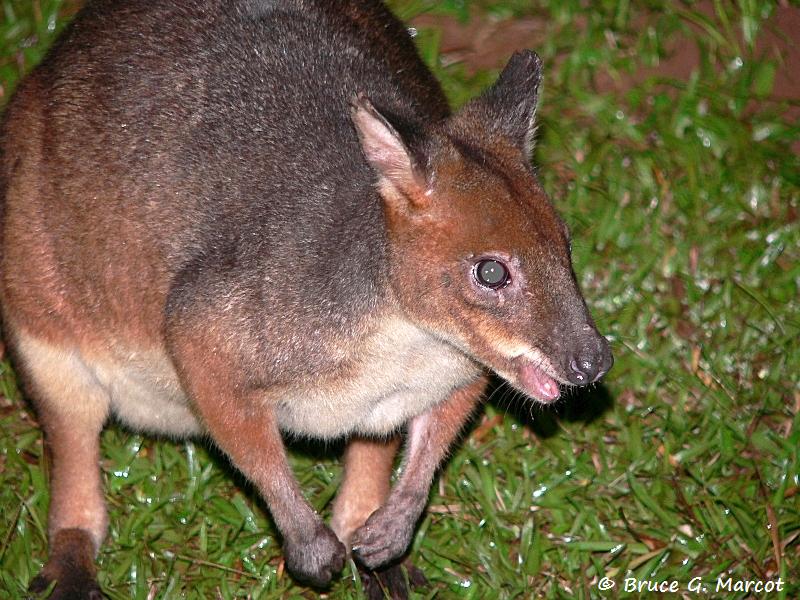
|
|
The Rainforest Kangaroo |
|
|
Click on images for larger versions
|
Red-legged Pademelon (Thylogale
stigmatica), Family Macropodidae |
Credit & Copyright: Dr. Bruce G. Marcot
Explanation: You've likely seen many photos and videos of kangaroos bounding across grassland and arid outback environments of Australia. But did you know that kangaroos also occur in, and are adapted to, humid rainforests?
Here's one example: the red-legged pademelon, that I discovered in wonderful Chambers Park rainforest of the humid tropics of northern Queensland, Australia.
The name pademelon refers to members of the marsupial genus Thylogale. Among their related kangaroos and wallabies, they are the smallest of the macropods. Some seven species of pademelons occur in forests of Australia and Papua New Guinea.
Red-legged pademelons are mostly nocturnal and usually solitary, but check out this photo I took on the lawn of Chambers Park:
Can you spot 6 red-legged padelemons in this photo?
This group appeared after dark, feeding on forbs and grass.
And notice how evenly spaced they appear, as if some invisible personal distance
rule were operating. They are often solitary, so such spacing
might serve to help them tolerate each other while they munch.
Not to be confused with the related species of eastern Australian forests, the red-necked pademelon (which we explored in a previous EPOW episode), red-legged pademelons can grow up to about 26 pounds (12 kg), so this is large for a pademelon.They are not threatened, and occur widely with a large overall population in protected areas in Australia (but not in protected areas in New Guinea).
Next week's picture:
Hornbill Indicators of East Africa
< Previous ... | Archive |
Index |
Location | Search | About EPOW | ... Next >
|
|
Author & Webmaster: Dr.
Bruce G. Marcot
Disclaimers and Legal
Statements
Original material on Ecology Picture of the Week ©
Bruce G. Marcot
Member Theme of The Plexus